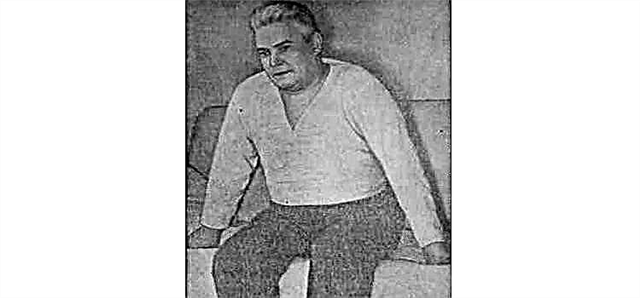Can a child rinse their nose with chamomile? Yes, this medicinal herb is great for rinsing the nasal cavities of people of any age, including even babies in the first years of life. This remedy is most widely used for the treatment of the common cold.
Themselves infectious lesions with flu or ARVI, rinsing with chamomile is not able to cure - this will require taking antimicrobial drugs. But for relieving the symptoms of nasal congestion and ensuring normal nasal breathing, chamomile works very well.
 In addition, the infusion of this medicinal herb will help you in the fight against a runny nose caused by allergies to pollen, pet hair, etc. Rinsing the nasal passages itself effectively removes accumulated dirt, dust and other particles that cause increased mucus production. But the chamomile infusion also has some anti-allergenic effects on the nasal mucosa.
In addition, the infusion of this medicinal herb will help you in the fight against a runny nose caused by allergies to pollen, pet hair, etc. Rinsing the nasal passages itself effectively removes accumulated dirt, dust and other particles that cause increased mucus production. But the chamomile infusion also has some anti-allergenic effects on the nasal mucosa.
Important! A serious advantage of chamomile infusion is that it is hypoallergenic (non-allergenic).
In order to determine whether it is possible to rinse your nose with chamomile in your case, it is best to first consult an otolaryngologist for advice. He will be able to assess whether or not you have contraindications to this procedure.
What effect does chamomile have?
The healing effect of this medicinal herb is due to those substances that are called flavonoids in herbal medicine. These are biochemically active compounds of plant origin, which in their structure are close to phenols and some vitamins. In addition, chamomile contains some light essential oils. All these substances enter the nasal rinse solution in free form during the preparation of chamomile infusion.
Flavonoids have a beneficial effect on the regenerative capacity of the nasal mucosa. In addition, they have a rather strong anti-inflammatory effect and relieve tissue irritation. Also, as mentioned above, they also have a slight anti-allergenic effect. Essential oils, due to their volatility, primarily serve as a vehicle for the delivery of other compounds, which, with their help, are more quickly absorbed by the cells of the mucous membrane.
Finally, chamomile infusion perfectly looses mucus that accumulates in the nasal passages with a cold. This mucus is a suitable breeding ground for pathogens. Therefore, with the help of rinsing the nose with chamomile, you can significantly speed up the healing process and prevent the development of a second disease.
How to prepare chamomile infusion?
Recipe number 1
For him, you will need a pharmacy medicinal chamomile, already packaged in ready-made bags, like tea bags. Here the dosage of the phytopreparation is already measured, so you just have to pour such a bag with 1 glass of boiling water and let the solution cool to room temperature.
measured, so you just have to pour such a bag with 1 glass of boiling water and let the solution cool to room temperature.
Recipe number 2
In this case, you will need dry chamomile, the packaging of which is easy to buy at almost any pharmacy. Put 1 tablespoon of the dried herb in 1 glass of water. You can use boiling water, or you can boil water with chamomile. In any case, the liquid should be infused until it reaches room temperature. Then strain the solution, thereby carefully removing from it all solid components that can damage the nasal mucosa when rinsing.
Important! The shelf life of chamomile infusion for rinsing the nose is 1 day. The next day, you should prepare a new portion.
To enhance the therapeutic effect, you can add components such as:
- the same amount of medicinal sage (you need to brew the infusion with this herb);
- 1-2 drops of iodine (undesirable if the liquid will be used to rinse the nose in a child under 3 years of age);
- a pinch of salt or baking soda.
Rinsing methods
Now let's talk about how to rinse your nose with chamomile. Some of the techniques listed below work well at any age, and some are intended only for certain categories of patients.
Using your own palms
This is the simplest way, in which a small amount of chamomile infusion for rinsing the nose should be poured into a folded palm, hold one of the nostrils with the other hand, and gently draw in part of the liquid with the other nostril. Then you need to tilt your head so that this nostril is on top. The solution will pass through the nasopharynx and, under the influence of gravity, pour out of the other, previously pinched nostril.
The advantage of this method is that the chamomile infusion lingers for some time in the nasal passages. This allows the drugs to settle on the mucous membrane. This technique can be used on patients of almost any age, except perhaps very young children.
Syringe or syringe
This technique is a good alternative to using the palms. People of any age, including infants, can rinse their nose with chamomile with its help, subject to certain conditions. In this case, chamomile infusion is drawn into a rubber syringe bulb or into a disposable syringe without a needle. You insert the tip of the container into one of the nostrils, squeezing the other, and then gently press on the plunger or squeeze the pear, feeding the liquid. Make sure that the pressure of the jet is not intense - in this case, the solution can penetrate into the middle ear cavity and cause its inflammation.
Important! In children under the age of 7 years, when using a syringe or syringe, it is necessary to measure the injection force with particular care. A too strong jet of liquid can not only penetrate the middle ear, but also directly damage the delicate mucous membrane.
As in the previous version, by pinching the second nostril, you leave the solution in the nasal cavity for a while, which allows it to settle on its inner surface. You can then use one of 3 fluid removal techniques:
surface. You can then use one of 3 fluid removal techniques:
- Turn your head so that the liquid pours out through the other nostril.
- Tilt your head down - then the infusion will flow out of the same nostril.
- Tilt your head back so that the solution enters the nasopharynx, and from there into the mouth.
Using an eyedropper
This method is the most gentle, but also the least effective in adults and adolescents, due to the fact that when using it, too little liquid enters the nasal cavity. However, this technique is optimal if you want to rinse the nose with chamomile on a young child.
For babies, 2-3 drops of chamomile solution are usually instilled into each of the nostrils and the nose is pinched for 1-1.5 minutes. Then the liquid is removed with a syringe or the child is turned over so that his head is at the bottom - then the infusion will flow out on its own. After that, the nasal cavity should be carefully cleaned with rotational movements, introducing a dry cotton flagellum into it. In adults, the dosage of chamomile solution is in this case 7-8 drops in each nostril, and the rinsing procedure ends with a thorough blowing of your nose.
Indian way
To rinse your nose in this way, you need to purchase a special earthenware teapot or a more modern device called Aqua-Maris. Chamomile infusion is poured into such a dish, and its spout is inserted into one of the nostrils. In this case, your head should be lowered down and turned to the side.Then one of the nostrils, where the solution will flow, will be higher than the second. In this case, the liquid will pass through the nasal cavity and flow out of the second, "lower" nostril. This technique is not suitable for very young children, but already from the age of 7-10 they are quite capable of mastering it.
Important! This method will be most simple to use if you hold your breath directly during rinsing through the nasopharynx.
Deep rinsing
 This is the most difficult, but also the most effective method. Pour the chamomile infusion into a wide, open-topped container (such as a large low-sided bowl). Then pinch one nostril with your finger, and lower the other into the liquid and begin to intensely draw it into yourself. In this case, the mouth should be open, since the solution will pour out through it. Only adolescents and adults will be able to master this technique, but its use guarantees the most complete and thorough cleansing of the nasopharynx and nasal passages.
This is the most difficult, but also the most effective method. Pour the chamomile infusion into a wide, open-topped container (such as a large low-sided bowl). Then pinch one nostril with your finger, and lower the other into the liquid and begin to intensely draw it into yourself. In this case, the mouth should be open, since the solution will pour out through it. Only adolescents and adults will be able to master this technique, but its use guarantees the most complete and thorough cleansing of the nasopharynx and nasal passages.
Remember that you should not overuse rinsing, so as not to wash out the normal microflora of the nasal cavities with too intensive cleaning. In order to achieve the maximum therapeutic effect, chamomile infusion for rinsing the nose is sufficient to apply no more than 2-3 times a day for a maximum of 1 week. After the procedure, blow your nose thoroughly to remove any remaining fluid and mucus, and try to stay warm for an hour and a half to avoid hypothermia of the sinuses.



